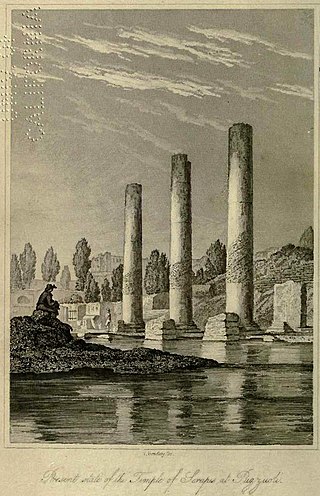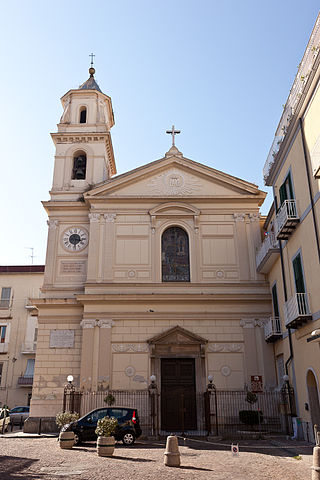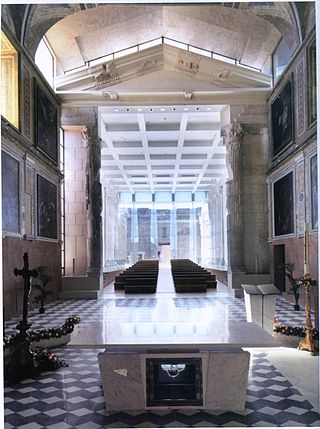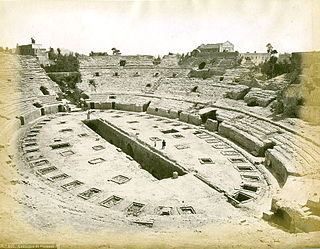Self-guided Sightseeing Tour #1 in Pozzuoli, Italy
Legend
Tour Facts
2.8 km
53 m
Experience Pozzuoli in Italy in a whole new way with our free self-guided sightseeing tour. This site not only offers you practical information and insider tips, but also a rich variety of activities and sights you shouldn't miss. Whether you love art and culture, want to explore historical sites or simply want to experience the vibrant atmosphere of a lively city - you'll find everything you need for your personal adventure here.
Individual Sights in PozzuoliSight 1: Macellum Tempio di Serapide
The Macellum of Pozzuoli was the macellum or market building of the Roman colony of Puteoli, now the city of Pozzuoli in southern Italy. When first excavated in the 18th century, the discovery of a statue of Serapis led to the building being misidentified as the city's serapeum or Temple of Serapis.
Sight 2: Chiesa di Santa Maria delle Grazie
The church of Santa Maria delle Grazie is the oldest parish in the diocese of Pozzuoli, built on 15 November 1624 by Bishop Lorenzo Mongiò. In ancient times it had jurisdiction over a vast territory, which included: Pozzuoli, Agnano, Bacoli, Bagnoli, Licola, Miseno and Monte di Procida. Following the creation of other parishes in these areas, the area of competence of Santa Maria delle Grazie has now been reduced to only a part of the city center.
Wikipedia: Chiesa di Santa Maria delle Grazie (Pozzuoli) (IT), Website
Sight 3: Basilica Cattedrale San Procolo Martire
Pozzuoli Cathedral or the Basilica of San Procolo martire is the main Roman Catholic church in Pozzuoli and the seat of the Diocese of Pozzuoli. It sits at the top of the Rione Terra and is built around an ancient Roman temple.
Sight 4: Rione Terra
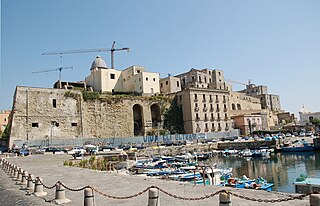
- You are free: to share – to copy, distribute and transmit the work to remix – to adapt the work
- Under the following conditions: attribution – You must give appropriate credit, provide a link to the license, and indicate if changes were made. You may do so in any reasonable manner, but not in any way that suggests the licensor endorses you or your use. share alike – If you remix, transform, or build upon the material, you must distribute your contributions under the same or compatible license as the original.
- The author " RaBoe/Wikipedia " is named A weblink to the original image is provided: //commons.wikimedia.org/wiki/File:Rione_Terra_visto_dal_porto_di_Pozzuoli_(2010)_by_RaBoe-22.jpg A copy of, or the Uniform Resource Identifier (https://creativecommons.org/licenses/by-sa/3.0/de/legalcode) for, this License with every copy
- The author " RaBoe/Wikipedia" is named A copy of, or the Uniform Resource Identifier (https://creativecommons.org/licenses/by-sa/3.0/de/legalcode) for, this License with every copy
/ CC BY-SA 3.0 de
Rione Terra is a historic quarter in Pozzuoli, Italy, in the Phlegraean Fields region west of Naples. The ancient fortress originally served as the acropolis for the Greek settlement of Dicearkia before being integrated as the Roman port city of Puteoli. The densely built-up district is located on a small tufa promontory overlooking the Gulf of Pozzuoli and today serves as a tourist attraction.
Sight 5: Anfiteatro Flavio
The Flavian Amphitheater, located in Pozzuoli, is the third-largest Roman amphitheater in Italy. Only the Roman Colosseum and the Amphitheatre of Capua are larger. It was likely built by the same architects who previously constructed the Roman Colosseum. The name "Flavian Amphitheater" is primarily associated with the Roman Colosseum.
Sight 6: Anfiteatro minore
The minor amphitheater of Pozzuoli was a theater of ancient Roman construction, of which few ruins remain; a classic Roman amphitheater from the Augustan or pre-Augustan era. The axes of the ellipse would measure 130 and 95 meters respectively. The main ruins that have come down to us are a dozen arches built in opus incerta that had the function of supporting the curve of the cavea.
Share
How likely are you to recommend us?
Disclaimer Please be aware of your surroundings and do not enter private property. We are not liable for any damages that occur during the tours.
GPX-Download For navigation apps and GPS devices you can download the tour as a GPX file.
